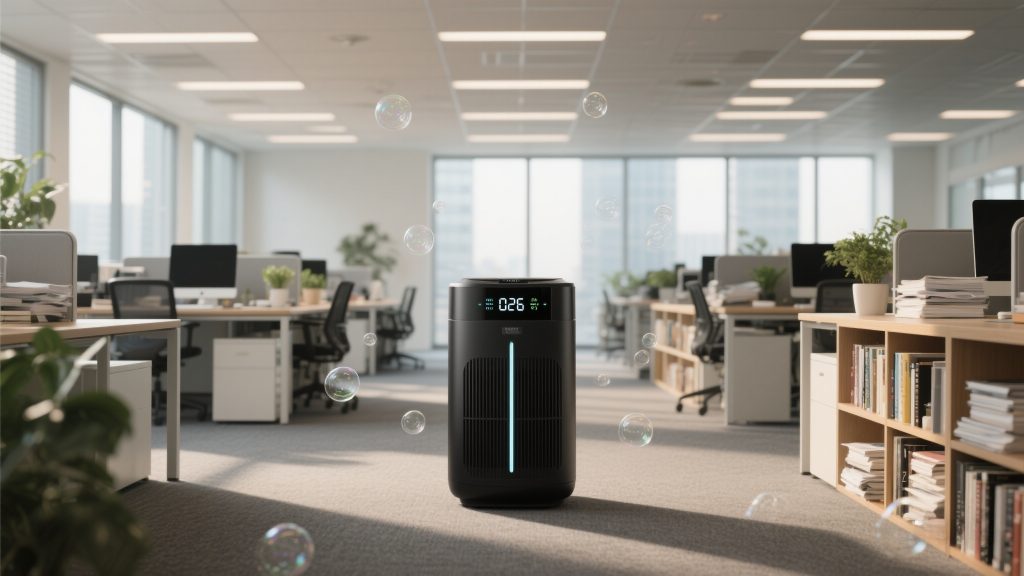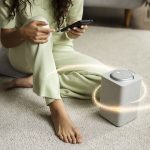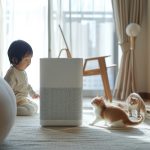For many, air purifiers have become a go-to solution for improving indoor air quality. But would an air purifier help with dust? Let’s explore the science, technology, and practical considerations behind air purifiers and their effectiveness against dust.
Understanding Dust and Its Sources
Dust is a mix of particles from both indoor and outdoor environments. Common components include:
| Dust Component | Typical Size (microns) | Source |
| Pollen | 10–100 | Outdoor plants |
| Pet Dander | 2.5–10 | Animal skin and fur |
| Skin Cells | 5–10 | Humans and pets |
| Fabric Fibers | 1–50 | Clothing, carpets, upholstery |
| Mold Spores | 3–40 | Damp indoor/outdoor areas |
| Bacteria | 0.3–10 | Airborne contaminants |
Outdoor dust enters through windows, doors, or HVAC systems, while indoor activities like cooking and cleaning stir up particles. Because dust ranges from visible specks to ultrafine particles (under 0.3 microns), effective removal requires advanced filtration.
How Dust Affects Health and Comfort
For individuals with allergies, asthma, or sensitivities, wondering does air purifier help with dust is essential to their well-being. Dust exposure can lead to sneezing, coughing, nasal congestion, and itchy eyes, and prolonged exposure to fine particles may worsen respiratory or cardiovascular issues.
Common symptoms of dust-related exposure include:
- Frequent sneezing or nasal irritation
- Wheezing or shortness of breath
- Dry or itchy skin
- Poor sleep quality due to irritated airways
By reducing dust, air purifiers contribute to a cleaner, more comfortable living environment—especially for vulnerable groups like children, seniors, and people with chronic illnesses.
How Air Purifiers Tackle Dust
Air purifiers use multiple technologies to capture airborne particles. Below is a comparison of common filtration methods:
| Technology | Function | Effectiveness Against Dust |
| Pre-Filter | Traps large particles (hair, lint) | Captures visible dust; prolongs HEPA life |
| HEPA Filter | Captures 99.97% of particles ≥0.3 microns | Highly effective for fine dust |
| Activated Carbon | Absorbs odors and chemicals | Indirectly helps by tackling pollutants |
| Ionizers/UV-C | Charges particles or kills microbes | Limited direct impact on dust removal |
Key Takeaways:
- HEPA filters are critical for capturing fine dust particles.
- Pre-filters enhance overall efficiency by protecting primary filters.
- Ionizers and UV-C address microbes but aren’t essential for dust reduction.

Which Air Purifier Is Best for Dust?
When choosing an air purifier specifically to combat dust, prioritize models with the following features:
- True HEPA Filter: Certified to remove 99.97% of particles ≥0.3 microns.
- Multi-stage Filtration: A pre-filter combined with HEPA and optional activated carbon for optimal performance.
- High CADR Rating: Especially for dust, aim for a high CADR to ensure faster air circulation.
- Smart Features: Indicators for filter replacement and air quality monitoring improve usability and efficiency.
HOKO’s home, desktop, and car air purifiers are designed with these specifications in mind, delivering reliable dust filtration for various room sizes and conditions.
Factors That Influence Effectiveness
Not all air purifiers perform equally when it comes to dust removal. If you’re wondering do air filters help with dust, consider these factors when selecting a unit:
Key Considerations
- Room Size: Match the purifier’s Clean Air Delivery Rate (CADR) to your room’s square footage.
- Filter Quality: Choose certified HEPA filters; avoid “HEPA-like” imitations.
- Maintenance: Replace filters as recommended (typically every 6–12 months).
- Placement: Position in high-traffic areas away from obstructions.
For example, a large living room (300 sq. ft.) may require a CADR of 300+ cubic feet per minute.
What Air Purifiers Can’t Do
While air purifiers reduce airborne dust, they have limitations:
- Surface Dust: Settled dust requires vacuuming or wiping.
- Heavy Particles: Larger debris (e.g., sand) may fall too quickly to be captured.
- Outdoor Infiltration: Open windows or poor sealing reintroduce dust.
Complementary Strategies for Reducing Dust
Pair air purifiers with these practices for optimal results:
| Strategy | Benefit |
| Use a HEPA Vacuum | Prevents dust recirculation |
| Maintain 30–50% Humidity | Reduces dust mite populations |
| Wash Bedding Weekly | Eliminates dust mites and fibers |
| Seal Windows/Doors | Blocks outdoor dust entry |
Conclusion
Air purifiers equipped with the right technology and used correctly can significantly reduce airborne dust and improve indoor air quality. They play a crucial role in minimizing allergens and enhancing daily comfort, especially for those with respiratory sensitivities.
To achieve the best results, choose a purifier that matches your room size, replace filters regularly, and minimize outdoor dust infiltration. When combined with good cleaning habits and proper humidity control, air purifiers become a powerful tool in maintaining a cleaner, healthier home environment.


